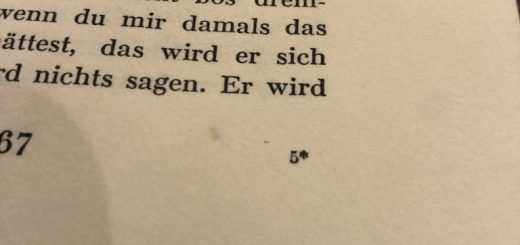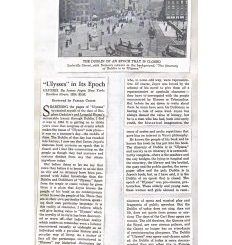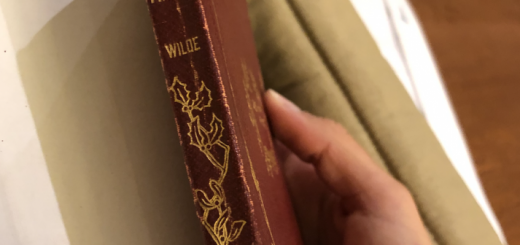The Mythic Character of James Joyce by Charlotte T.
The compiled newspaper clippings and articles on James Joyce shows how the world interacts with the author as a cultural figure. When holding the book, it feels as

This is one of the only articles which mentions “Dubliners”.
if it has been created by one of Joyce’s most avid fans seeking to preserve his glory in a scrapbook. The articles discuss Joyce as a person as much as they discuss his literary work—his childhood, his ties to Dublin, his relationships, his legal troubles, and censorship. While most of the articles focus on Ulysses, the object itself adds to my understanding of Dubliners. Just as we framed our discussion about his early short stories around the themes of self-realization, epiphany, and paralysis, the scrapbook can be viewed through a similar lens.
While Joyce’s characters are on a struggling journey towards self-realization in Dubliners, it appears Joyce has already achieved this feat in the book of clippings. He could be considered a character as well, rather than a real person, as the selected articles treat him as a mythical figure of literary genius. Since he has already received positive accolades by the time of publication for many of the articles, the frustrated and striving qualities in Dubliners are lost. Even negative reviews of his books acknowledge universal acclaim which the author seeks to combat, or concede that while they did not personally enjoy the book, it is a masterpiece. Individual opinions may vary, but Joyce appears immune to ambivalence/irrelevance. The articles seem to acknowledge a mysterious quality in Joyce’s personality while reinforcing the established persona.
This leads to the theme of paralysis. Joyce is quite literally paralyzed in the book, constructed from dismembered

Joyce with his grandson.
articles to create a Frankenstein-like amalgamation of his character. Since there are very few notes in the book, the articles sometimes lack a sense of cohesion. The fixation on Ulysses, even after the publication of Finnegan’s Wake, shows a paralysis in how the public thinks of Joyce, and the erasure of Dubliners is almost complete (image 1). There are some moments when the clips depart from the usual depiction of Joyce. One photo of Joyce holding his grandson alludes to the similarity of the little boy’s name—Stephen Joyce— to Joyce’s alter ego Stephen Dedalus in A Portrait of an Artist as a Young Man (image 2). This paternal quality is an interesting contrast considering most of the children in Dubliners are symbols of neglect. One child who is crucial to the ending of “The Dead”, Michael Furey, serves only to alienate the protagonist from his wife. I have not read Joyce’s later works, so I cannot comment on whether his deception of children became more positive as his career progressed. These moments may not be characterized as epiphanies, but they do serve as outliers when compared to the other articles. Advertisements promoting Joyce’s books in countries where they were previously banned certainly have the energy of an epiphany; After decades of litigation, the excitement of accessing his books in places where they were once censored is palpable (image 3).
After flipping through the scrapbook-like artifact, I wonder how a work of literature changes when its author is a cultural

An advertisement for Ulysses, which was previously banned by the US government.
icon. Fame expands an author’s audience and prompts readers to approach the work with a preconceived notion of its importance. However, this object makes me question if Joyce is merely famous, or a representation of a more abstract idea like “literary genius”. Should we analyze every word he writes? Does the Western canon obsess over James, treating him like a God? Or is his fame entirely deserved?









Recent Comments